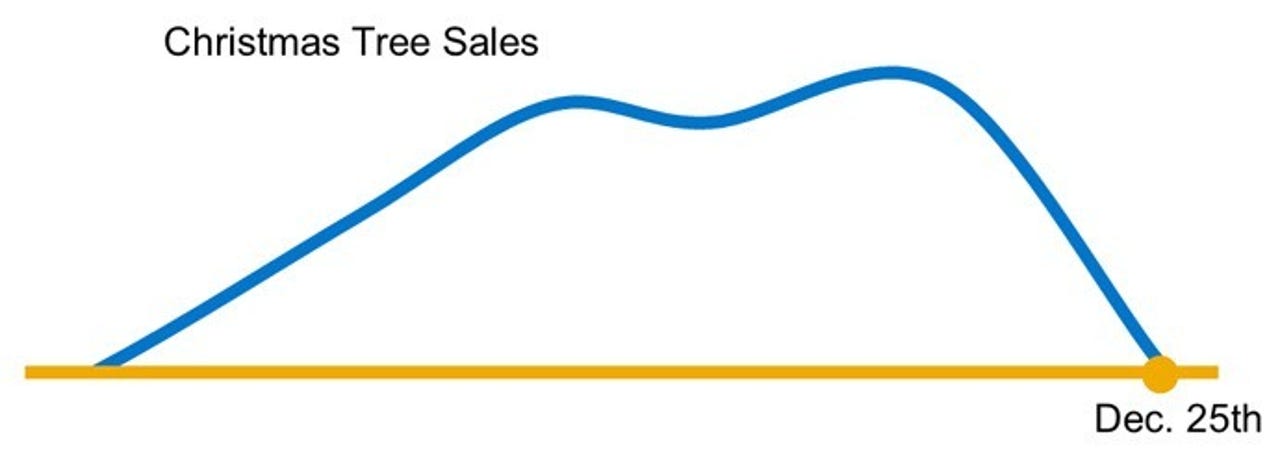Christmas Tree Analytics
According to the Christmas Tree Association, 78% of all US households will display a Christmas tree this year, and around 19% of those will be natural.
Natural Christmas trees are a perishable good whose value drops to near zero after December the 25th, so retailers are keen to make sure they have the right number of trees in stock for the winter season.
A couple of years ago, one large home improvement retailer decided to use analytics to look at trends in Christmas tree sales data. The overall trend looked something like this:

But when the analysts dug down deeper, the company realized that they were actually facing two very different selling opportunities, with different characteristics. The first wave of sales was to institutions such as retail stores and town halls. The second wave was to individuals. The product and pricing decisions were very different for the two groups. For example, businesses bought early, wanted larger trees on average, and didn't mind if they only lasted until the 25th - while consumers bought later, were more price-sensitive, and wanted the needles to stay on until at least New Year.
Being able to separate the two trends meant the retailer was able to be much more proactive at ordering, stocking, and pricing the right assortments of trees in the right stores at the right time for the Christmas season - making sure that customers didn't leave empty handed, while minimizing wastage and optimizing their profits.
Human nature being what it is, many consumers buy their trees at the last minute (in real life, the curve above should probably be drawn more as a cliff, with sales plummeting late on Christmas Eve). So the analytics also had to be fast and flexible, so that the retailers could react quickly to any changes observed in the last few days. This turned out to depend on a host of variables, including the weather, traffic patterns, and discounting strategies.
For example, a big celebration might increase the amount of sales in the nearest retail store. Analytics could then be used to quickly predict the new sales so that the retailer could move trees from nearby stores rather than running out of stock.
Thanks to analytics, the retailer was able to provide more trees to more households at better prices and higher profits -- how's that for the season of goodwill!